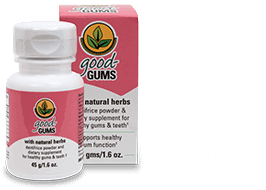What Is Your Tongue Telling You?

We speak a lot about your mouth being a ‘window’ to the rest of your body but we’d like to give you a quick and easy, practical way of letting you see for yourself exactly what might need a little bit more of your attention. By simply sticking out your tongue and giving it a close look in the mirror, you can observe whether any noticeable abnormalities are indicating any internal issues. While most lumps, bumps, and discolorations may be harmless, sometimes they can be clues as to what’s going on with your overall health.
What does your tongue have to say?
A healthy tongue is usually pink in color and covered in small nodules called papillae. Below is a list of what to look out for when evaluating changes to your tongue and what may be a cause for concern.
White patches/coating or white spots on the top of your tongue
This could be a sign of oral thrush, which is a yeast infection that develops inside the mouth. It usually develops due to an imbalance of bacteria in your mouth. For example, antibiotics or certain medications can strip the body of good bacteria, which also lowers the immune system making the body more prone to fungal infections such as thrush.
White patches in the mouth could suggest leukoplakia, a condition usually caused by smoking or other irritants, which aggravate the tongue. Although most leukoplakia cases are harmless, more serious cases may be linked to oral cancer, therefore it is advisable to contact your doctor or dentist for an evaluation.
White lacy lines may be an indication of oral lichen planus, which is an inflammatory condition that affects mucous membranes within the mouth and could be the result of a poor immune function. It is advisable to avoid spicy foods and sour fruits, which can aggravate the condition further.
Hairy tongue
When your tongue appears hairy, it is essentially overgrown papillae, usually caused by inadequate oral hygiene that has allowed bacteria to accumulate on the surface of your tongue. Other causes include smoking, excess coffee drinking or certain immune altering medication such as antibiotics, steroids or chemotherapy. Fortunately this condition, although visually unpleasant, is not typically very serious and usually, all it takes is a good go with the tongue scraper to rid your tongue of this black build-up of bacteria.
Your tongue is bright red
This could suggest a folic acid and vitamin B-12 deficiency, which may cause your tongue to look a lot redder than usual.
A strawberry red colored tongue may be an early sign of Kawasaki disease, which is a rare disease that inflames the blood vessels and is most commonly found in children. The cause is unknown, however, is usually easy to cure when caught early.
A red and bumpy tongue could be a sign of scarlet fever, especially when accompanied by a high fever. Antibiotics will usually be sufficient enough to cure scarlet fever.
Your tongue is burning!
Of course, we’ve all felt the burn from sipping on hot beverages or eating piping hot food before it’s had a chance to cool down but when you experience tongue burning for no apparent reason, this could be a sign of burning tongue syndrome. Usually, your tongue will feel a scalding sensation along with a bitter or metallic taste. Avoid acidic foods like citrus fruits and try sucking on an ice cube to relieve symptoms.
It is also possible that you are allergic to the (SLS) sodium lauryl sulfate in your toothpaste. Even though you may have been using the same toothpaste your entire life, it is still possible to suddenly develop an allergic reaction. Another remedy would, therefore, be to try another toothpaste. We recommend using our all-natural tooth powder Good-Gums, which is completely toxin free and chemical free, with no record of any adverse reactions.
Your tongue is sore and bumpy
Inflamed papillae could be a result of eating hot food or beverages too quickly or biting down too hard on your tongue while eating and can take up to a few days to heal. Canker sores are small, painful reddish bumps and are commonly found on the tongue from time to time. They are usually caused by stress or a lowered immune system and will normally heal on their own within a week or two.
Enlarged papillae also called ‘lie bumps’ can appear as white or red swollen bumps on the surface of your tongue. These are extremely common and usually develop within people who eat a lot of highly acidic, processed or sugary foods. Gargling with salt water and changing your diet will usually relieve symptoms.
If you are experiencing a lot of pain, this could be indicating something more serious such as oral cancer so we recommend paying a visit to your dentist or doctor.
We recommend that you check your tongue every day and if you think that you may have any of the conditions listed, it is advisable to consult a medical professional if you notice conditions do not go away within a week or two.

Subscribe To Our Newsletter
Be the first to receive all our news, offers and natural oral health tips and articles.


